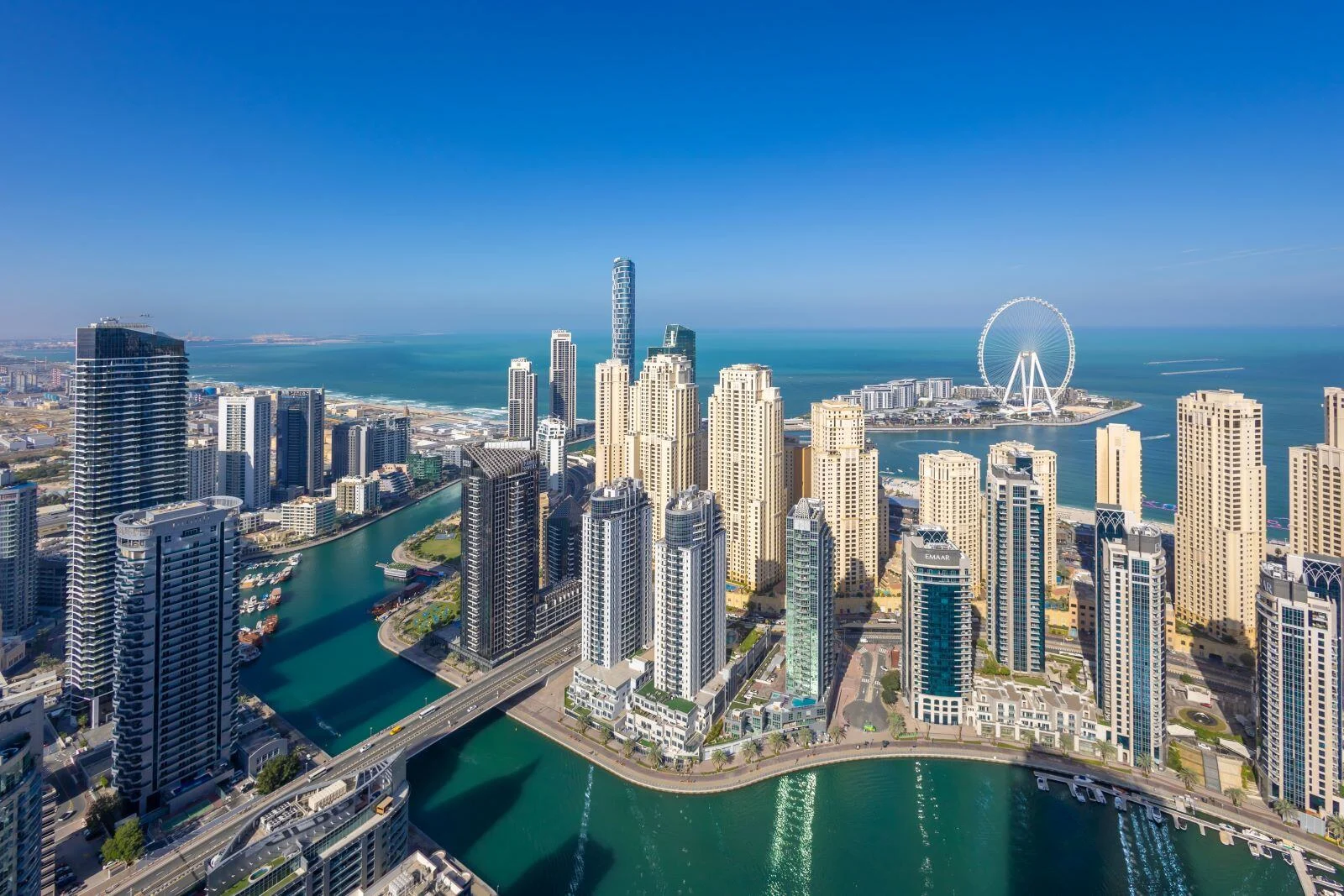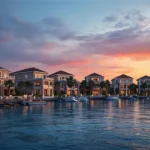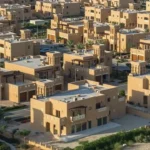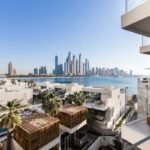Now Reading: How Real Estate Taxation Differs Across Dubai’s Island Developments
-
01
How Real Estate Taxation Differs Across Dubai’s Island Developments
How Real Estate Taxation Differs Across Dubai’s Island Developments
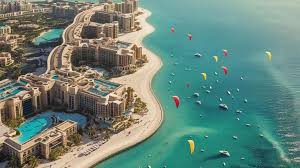
Table of Contents
Real Estate: Picture yourself lounging by the pool of your villa on Palm Jumeirah, or gazing at the serene waters from a Dubai Islands apartment, knowing you’ve cracked the code on Dubai’s tax landscape. In 2025, Dubai’s island developments Palm Jumeirah, Palm Jebel Ali, and Dubai Islands stand as global beacons for investors seeking luxury with minimal tax burdens.
With 100% freehold ownership, a dirham pegged to the U.S. dollar for stability, and no personal income tax, capital gains tax, or annual property taxes for individuals, these islands draw 58% of buyers from countries like the UK, India, and Russia, fueling 94,000 property transactions in the first half of 2025. Offering 4-6% rental yields and 8-12% price appreciation, they outshine London (2-4%) or New York (3-4%).
Real Estate Properties over $545,000 qualify for a 10-year Golden Visa, while smaller units offer 2-year residency perks. While tax benefits are consistent, differences in transfer fees, VAT recovery, and project-specific costs across Palm Jumeirah Ocean Villas, Palm Jebel Ali Coastal Villas, and Dubai Islands’ Haven Living, Azura Residences, and Horizon Villas create unique considerations. This guide breaks down these variations to help you invest wisely.
Dubai’s Island Developments: A Tax-Light Paradise
Spanning iconic locations 15-30 minutes from Dubai International Airport via Sheikh Zayed Road or water taxi, Palm Jumeirah, Palm Jebel Ali, and Dubai Islands offer 50-80 kilometers of coastline, vibrant communities, and low 2-3% vacancy rates compared to 7-10% globally, driven by 25 million tourists and a 5% population surge. Individual investors keep 100% of rental income ($48,000-$240,000 annually on a $1.2 million-$6 million property), versus $26,400-$144,000 elsewhere after taxes.
Zero capital gains tax saves $60,000-$280,000 on a $300,000-$1 million profit, and no annual property taxes save $12,000-$120,000 yearly, unlike New York (1-2%) or London (council tax up to 2%). Residential purchases avoid 5% VAT ($60,000-$300,000), but differences in developer fees, payment plans, and corporate tax exemptions create distinct tax profiles across these islands.
The tax-light vibe feels like a warm hug for your wallet.
No Personal Income Tax: Universal Across Islands
All three island developments offer zero personal income tax, a major draw compared to the U.S. (up to 37%) or UK (up to 45%). A $2 million Haven Living apartment on Dubai Islands yielding $80,000-$120,000 annually keeps every dirham, versus $44,000-$72,000 elsewhere, saving $36,000-$48,000. A $4 million Palm Jumeirah villa yielding $160,000-$240,000 saves $72,000-$96,000.
Long-term leases require Ejari registration ($54-$136 annually), while short-term rentals, boosted by 25 million tourists, need DTCM registration ($408-$816). Palm Jumeirah’s tourist-heavy location boosts short-term yields by 15-20% ($12,000-$48,000), while Dubai Islands’ newer projects offer 10-15% ($8,000-$36,000). Palm Jebel Ali’s eco-friendly focus attracts long-term tenants, stabilizing income. This tax-free benefit is consistent across all islands.
Tax-free rentals feel like a monthly gift to your dreams.
Zero Capital Gains Tax: Profits Stay Yours
Across all islands, zero capital gains tax lets investors keep 100% of sale profits. Selling a $2 million Azura Residences apartment on Dubai Islands for $2.5 million after 25% appreciation yields a $500,000 tax-free profit, saving $100,000-$140,000 compared to London (20-28%) or New York (20-37%).
A $4 million Palm Jebel Ali villa sold for $5 million yields a $1 million tax-free gain, saving $200,000-$280,000. Price growth varies: Palm Jumeirah at 8-12%, Palm Jebel Ali at 10-15% due to limited supply, and Dubai Islands at 8-12%. This universal tax advantage drives 58% of buyers to these islands, though transfer fees differ.
Keeping every dirham feels like a financial high-five.
No Annual Property Taxes: Consistent Savings
None of Dubai’s island developments impose annual property taxes, saving $12,000-$120,000 yearly on a $1.2 million-$6 million property, unlike New York (1-2%) or London (council tax up to 2%). Maintenance fees vary: Palm Jumeirah’s luxury villas cost $15,000-$25,000, Palm Jebel Ali’s eco-friendly designs $12,000-$20,000, and Dubai Islands’ newer projects $5,000-$14,000.
A 5% municipality fee on rentals ($2,400-$12,000) applies across all islands, with higher fees in Palm Jumeirah due to premium amenities. These low ongoing costs make all islands attractive, but budget-conscious investors may prefer Dubai Islands’ lower maintenance fees.
No property taxes feel like a weight lifted from your investment.
VAT Exemption: A Shared Benefit with Nuances
Residential purchases across all islands are VAT-exempt, saving $60,000-$300,000 on a $1.2 million-$6 million property, unlike commercial properties or the UK’s stamp duty (up to 12%). However, off-plan purchases incur 5% VAT on developer fees, varying by island. Palm Jumeirah’s established projects like Ocean Villas have lower fees ($10,000-$20,000), while Palm Jebel Ali’s newer Coastal Villas and Dubai Islands’ Haven Living may hit $20,000-$80,000 due to complex designs.
These are recoverable via Federal Tax Authority (FTA) registration ($500-$1,000). Short-term rental operators must register for VAT if revenue exceeds $102,041, charging 5% but claiming credits on expenses like DTCM fees ($408-$816). A $2 million property yielding $80,000-$120,000 incurs $4,000-$6,000 in VAT but allows $1,000-$3,000 in credits. Palm Jumeirah’s high tourist traffic increases VAT exposure for short-term rentals, while Dubai Islands’ balanced mix reduces it. Non-compliance risks fines up to $13,612.
The VAT exemption feels like a welcoming handshake, with island-specific twists.
Transfer Fees: Variations Across Islands
Transfer fees are a key cost, with the 4% Dubai Land Department (DLD) fee consistent but varying by property value. For a $1.2 million Haven Living apartment on Dubai Islands, it’s $48,000; for a $4 million Palm Jumeirah villa, it’s $160,000. Broker fees, typically 2% ($24,000-$80,000), are standard, though Palm Jumeirah’s premium market may see negotiated waivers for off-plan projects.
Title deed issuance ($136-$272) and developer fees (up to $2,722) apply, with Palm Jebel Ali and Dubai Islands’ off-plan projects incurring higher fees due to ongoing construction. Gift transfers reduce DLD to 0.125% ($1,500-$5,000), saving $46,500-$155,000, with no island-specific variations. Mortgage registration (0.25% of the loan) and valuation fees ($680-$1,360) apply for financed deals. Dubai Islands’ newer projects offer more flexible payment plans (35/65), reducing upfront costs compared to Palm Jumeirah’s 60/40 plans.
Transfer fees feel like a tailored step toward island ownership.
Corporate Tax: Island-Agnostic but Relevant for Businesses
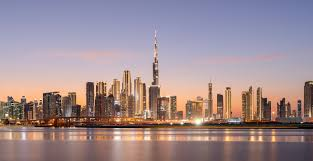
The 9% corporate tax applies to businesses across all islands unless exempt. A company leasing a $2 million property yielding $80,000-$120,000 faces a 9% tax ($7,200-$10,800), reducing net income to $72,800-$109,200. Qualified Free Zone Person (QFZP) status in areas like Dubai Multi Commodities Centre (DMCC) avoids this, saving $12,240-$30,600, with setup costs of $2,000-$5,000. Small business relief waives corporate tax for revenues under $816,000 until December 31, 2026. Individual ownership avoids this tax, making it ideal for most buyers across all islands.
Corporate taxes feel like a minor hurdle for individual investors.
New Tax Rule 1: Domestic Minimum Top-up Tax (DMTT)
Effective January 1, 2025, the DMTT imposes a 15% tax on multinational enterprises (MNEs) with global revenues over €750 million ($793 million). A corporate entity leasing 10 properties with $1 million in income faces a 15% tax ($150,000), reducing net income to $850,000. Individual investors and smaller entities with revenues below $816,000 are unaffected, and QFZP status avoids DMTT, saving $12,240-$61,200 on $122,400-$612,000 in income. This rule applies uniformly across all islands, preserving their tax-light appeal.
The DMTT feels like a corporate tweak, sparing individual wealth.
New Tax Rule 2: Qualifying Investment Fund (QIF) Updates
Cabinet Decision No. 34 of 2025, effective Q2 2025, refines QIF and Real Estate Investment Trust (REIT) rules. QIFs remain exempt from corporate tax if real estate income is below 10% of total income and ownership is diversified. If a QIF earns $1 million, with $200,000 from real estate, 80% ($160,000) faces 9% tax ($14,400). Restructuring costs $1,500-$4,000. This applies equally across islands, with individual investors dodging these rules entirely.
QIF updates feel like a smart challenge for corporate portfolios.
Palm Jumeirah Ocean Villas: Established Tax-Light Luxury
Palm Jumeirah Ocean Villas by Nakheel, set for completion in Q2 2025, offer 4-6 bedroom villas ($3 million-$6 million) with 4-6% rental yields and 8-12% price growth. A $4 million villa yields $160,000-$240,000 tax-free, saving $72,000-$96,000. Selling for $5 million yields a $1 million tax-free profit, saving $200,000-$280,000. No property taxes save $40,000-$80,000 yearly, and VAT exemption saves $200,000. Transfer costs include a 4% DLD fee ($120,000-$240,000), 2% broker fee ($60,000-$120,000), and title deed issuance ($136-$272). Gift transfers save $118,750-$237,500. Maintenance fees are $15,000-$25,000, with a 5% municipality fee ($8,000-$12,000). QFZP saves $40,800-$61,200. U.S. investors deduct depreciation ($72,727-$109,091), saving up to $36,364. Golden Visa eligibility applies.
The beachfront elegance feels like a tax-light masterpiece.
Palm Jebel Ali Coastal Villas: Eco-Friendly Tax Savings
Palm Jebel Ali Coastal Villas by Nakheel, set for completion in Q3 2025, offer 4-6 bedroom villas ($2.72 million-$5.44 million) with 4-6% rental yields and 10-15% price growth. A $3 million villa yields $120,000-$180,000 tax-free, saving $54,000-$72,000. Selling for $3.75 million yields a $750,000 tax-free profit, saving $150,000-$210,000. No property taxes save $30,000-$60,000 yearly, and VAT exemption saves $150,000.
Transfer costs include a 4% DLD fee ($108,900-$217,800), 2% broker fee ($54,450-$108,900), and title deed issuance ($136-$272). Gift transfers save $106,650-$213,300. Maintenance fees are $12,000-$20,000, with a 5% municipality fee ($6,000-$9,000). QFZP saves $30,600-$45,900. U.S. investors deduct depreciation ($54,545-$98,182), saving up to $34,091. Golden Visa eligibility applies.
The eco-friendly charm feels like a tax-smart retreat.
Dubai Islands Haven Living: Affordable Tax Efficiency
Haven Living by Metac Properties, set for completion in Q4 2025, offers 1-3 bedroom apartments ($475,750-$1.2 million) with 4-6% rental yields and 8-12% price growth. A $1.2 million apartment yields $48,000-$72,000 tax-free, saving $21,600-$28,800. Selling for $1.5 million yields a $300,000 tax-free profit, saving $60,000-$84,000. No property taxes save $12,000-$24,000 yearly, and VAT exemption saves $60,000. Transfer costs include a 4% DLD fee ($48,000), 2% broker fee ($24,000), and title deed issuance ($136-$272). Gift transfers save $46,500. Maintenance fees are $5,000-$10,000, with a 5% municipality fee ($2,400-$3,600). QFZP saves $12,240-$18,360. U.S. investors deduct depreciation ($21,818-$43,636), saving up to $17,455. Golden Visa eligibility applies.
The waterfront charm feels like a budget-friendly tax haven.
Dubai Islands Azura Residences: Modern Tax-Free Gem
Azura Residences by Invest Group Overseas, set for completion in Q2 2026, offers 1-4 bedroom apartments ($680,625-$2 million) with 4-6% rental yields and 8-12% price growth. A $2 million apartment yields $80,000-$120,000 tax-free, saving $36,000-$48,000. Selling for $2.5 million yields a $500,000 tax-free profit, saving $100,000-$140,000. No property taxes save $20,000-$40,000 yearly, and VAT exemption saves $100,000. Transfer costs include a 4% DLD fee ($80,000), 2% broker fee ($40,000), and title deed issuance ($136-$272). Gift transfers save $77,500. Maintenance fees are $6,000-$12,000, with a 5% municipality fee ($4,000-$6,000). QFZP saves $20,400-$30,600. U.S. investors deduct depreciation ($36,364-$72,727), saving up to $24,545. Golden Visa eligibility applies.
The urban waterfront feels like a sleek tax-free oasis.
Dubai Islands Horizon Villas: Modern Tax-Light Haven
Horizon Villas by a leading developer, set for completion in Q2 2026, offer 4-6 bedroom villas ($2.72 million-$5.44 million) with 4-6% rental yields and 8-12% price growth. A $3 million villa yields $120,000-$180,000 tax-free, saving $54,000-$72,000. Selling for $3.75 million yields a $750,000 tax-free profit, saving $150,000-$210,000. No property taxes save $30,000-$60,000 yearly, and VAT exemption saves $150,000. Transfer costs include a 4% DLD fee ($108,900-$217,800), 2% broker fee ($54,450-$108,900), and title deed issuance ($136-$272). Gift transfers save $106,650-$213,300. Maintenance fees are $12,000-$20,000, with a 5% municipality fee ($6,000-$9,000). QFZP saves $30,600-$45,900. U.S. investors deduct depreciation ($54,545-$98,182), saving up to $34,091. Golden Visa eligibility applies.
The waterfront serenity feels like a modern tax-light gem.
Strategies to Optimize Tax Savings
For individuals: First, hold properties personally to avoid corporate taxes. Second, negotiate DLD fee splits, saving $24,000-$120,000 on a $1.2 million-$6 million property. Third, use gift transfers to reduce DLD to 0.125%, saving $46,500-$237,500. Fourth, recover 5% VAT on developer fees via FTA registration ($500-$1,000). Fifth, use double taxation treaties with 130+ countries to avoid foreign taxes. Sixth, U.S. investors deduct depreciation ($21,818-$109,091) and management fees ($2,400-$14,545), saving up to $36,364. For corporates: First, obtain QFZP status to avoid 9% tax and DMTT. Second, keep QIF income below 10%. Third, leverage small business relief until 2026. Hire a property manager ($5,000-$25,000 annually) and tax professionals to avoid fines up to $136,125.
These strategies feel like a roadmap to tax-smart riches.
Ongoing Costs Across Islands
Maintenance fees vary: $15,000-$25,000 for Palm Jumeirah, $12,000-$20,000 for Palm Jebel Ali, and $5,000-$20,000 for Dubai Islands. A 5% municipality fee on rentals ($2,400-$12,000) applies universally. No annual property taxes save $12,000-$120,000 yearly. Short-term rentals boost yields by 10-20%, adding $8,000-$48,000, but require DTCM registration ($408-$816). Mortgage interest deductions for U.S. investors save up to $36,364. These low costs, compared to London’s council tax ($24,000-$120,000), favor Dubai Islands for budget-conscious buyers.
Ongoing costs feel like a gentle breeze compared to global markets.
Navigating Risks in 2025
A projected oversupply of 41,000 units may slow price growth, with Palm Jumeirah less affected due to its established status. Mitigate by choosing trusted developers like Nakheel, verifying escrow compliance under the 2025 Oqood system, and targeting low-vacancy projects (2-3%). Ensure QFZP and VAT compliance to avoid fines. Palm Jumeirah’s short-term rentals leverage tourists, while Palm Jebel Ali and Dubai Islands suit long-term leases. Proximity to key hubs drives value.
Why Dubai’s Islands Are Tax-Smart Havens
Palm Jumeirah Ocean Villas, Palm Jebel Ali Coastal Villas, Haven Living, Azura Residences, and Horizon Villas offer no personal income tax, capital gains tax, or property taxes, saving $12,000-$280,000 annually. With 4-6% yields, 8-15% price growth, and Golden Visa perks, these 2025 projects make Dubai’s islands vibrant, tax-light havens, with Dubai Islands offering the most cost-efficient entry.
read more: Dubai’s Top Waterfront Communities With Minimal Property Tax Exposure



